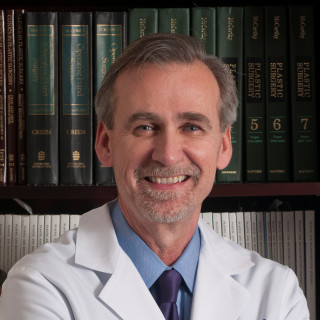Contrast and contradiction marked the 2018 Annual Meeting of the American Society of Aesthetic Plastic Surgery (ASAPS) held in New York at the end of April. This was the first time in a few years that I have not been speaking or occupied in committee meetings, and I found the perspective as a “rank and file” attendee enlightening, if a bit unsettling. As is usually the case, the Hot Topics session preceding the main meeting set the stage. I think the specialty of Aesthetic Plastic Surgery is at a crossroads.
The rise of the non-surgeons
For all of our carefully cultivated expertise as plastic surgeons, aesthetic surgery is on a path to be supplanted by nonsurgical procedures. To a great extent these are being done by “non-core” providers. Growth in aesthetic surgery on the hand has been flat for a decade. The result is that on a revenue basis, nonsurgical procedures are poised to overtake surgery within a year or two. Whether driven by patient demand or hyperbolic marketing, the crossing trend lines paint a clear picture of the future. How long that leaves board-certified plastic surgeons in charge remains to be seen; what is clear is that we will have to develop and maintain core expertise in nonsurgical devices and products.
Any doubt about this is dispelled by a quick survey of the exhibit hall. Laser and radiofrequency device manufacturers increasingly dominate (along with website developers and marketing companies), while surgical instrument vendors seem to occupy smaller booths every year. Just as telling, the Hot Topics session itself included only a handful of presentations on surgical methods; injectables, skin care products, and devices were the dominant theme. Like it or not, aesthetic surgery is folding into a subset of aesthetic medicine.
Aesthetic surgery becomes more invasive, while aesthetic medicine less so
Even while nonsurgical and minimally invasive options are on the rise, aesthetic surgical techniques seem to become more invasive. A panel titled “Subplatysmal surgery: A new standard in cervical contouring?” showcased submandibular gland excision, platysma transposition flaps, and digastric muscle debulking as routine maneuvers for facelifts. There is no question that these master surgeons get outstanding results with their tour de force expertise. But how will the average plastic surgeon balance patient demands for less invasive options and minimal downtime with the expectations of results obtainable only with a more aggressive surgical approach? I think it is going to require a bit of an ego check. Just because we can do something doesn’t mean that it matches our patients’ needs or expectations in terms of the overall experience. We have been accustomed to the results justifying any means while our patients might see it the other way around.
Art vs. science in aesthetic surgery
Aesthetic plastic surgeons have always faced the challenge of balancing artistry with science, but never more so than now. Bill Adams’s “C’mon man” session, in which the panelists were challenged to defend or refute urban myths about plastic surgery, brought some of these issues into focus. We saw panelists rage against the lack of objectivity in how results of surgery and nonsurgical techniques are reported, only to lean heavily on personal anecdotes in defense of their own views moments later. We’ve seen all this before.
What’s old is new again
Plastic surgeons were rightly skeptical about “threadlifts” when they were popularized a few years ago, though a few of the more curious among us had a brief dalliance. From a marketing perspective the idea was compelling: local anesthesia, short procedure, immediately visible results. We soon discovered that those results were dishearteningly temporary and often unnatural in appearance. A variation using cones instead of barbs to suspend the tissue may revive the procedure, branded as the “Silhouette Lift.” A similarly clever version called the Xact facelift employs a cannula device that uses suction to pull the target tissue into a chamber where it can be skewered with a suture, then anchored to temporal fascia as with other threadlifts.
Another echo from the past is questions about breast implant safety. More than a decade after the FDA lifted the moratorium, the risk of breast implant-related ALCL is a hot button issue. It remains true that no documented case has appeared with only smooth implants, so the role of textured surfaces is under scrutiny. The provisional understanding is that texturing creates more surface area and hence more biofilm, so that the degree of texturing is the important variable rather than texturing per se.
The long view
I have been around long enough to see some of these cycles run through, though the pattern seems more of an expanding spiral than a closed loop. Aesthetic surgery has gone from the poor stepchild of plastic surgery when ASAPS was founded more than 50 years ago to the dominant driving force in the specialty. The challenge for all of us is to embrace innovation with open mindedness and honesty.
Dr. Richard Baxter is a plastic surgeon, author, and medical director at Skin Spirit Washington State.







